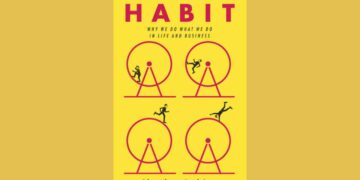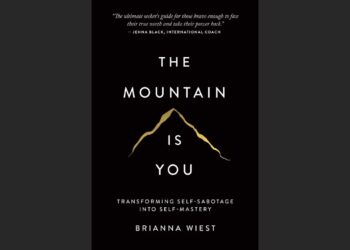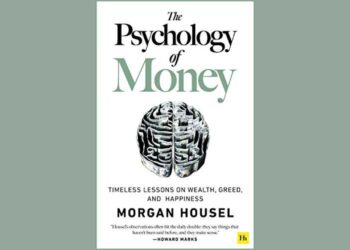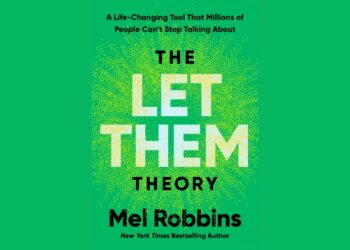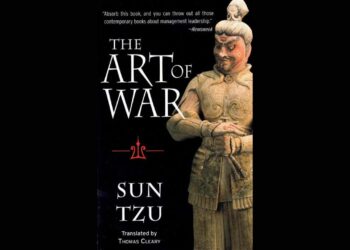Table of Contents
- Introduction
- Part One: The Habits of Individuals
- The Habit Loop: Cue, Routine, Reward
- The Role of Craving
- Changing a Habit
- The Case of Eugene Pauly
- Part Two: The Habits of Successful Organizations
- Keystone Habits
- Willpower as a Keystone Habit
- Organizational Habits and Crisis
- Part Three: The Habits of Societies
- Social Habits of Movements
- The Neurology of Free Will
- Practical Lessons from The Power of Habit
- Word Count Expansion: Going Deeper into Case Studies
- Starbucks and Willpower Training
- Target and Predictive Analytics
- Alcoholics Anonymous (AA)
- Conclusion: Why The Power of Habit Matters
- Key Quotes from The Power of Habit by Charles Duhigg
- On Habits and the Habit Loop
- On Change and Transformation
- On Keystone Habits and Willpower
- On Organizations and Society
- On Belief and Lasting Change
- On Personal Responsibility
- FAQs on The Power of Habit by Charles Duhigg
- 1. What is the main idea of The Power of Habit?
- 2. What are the three components of the habit loop?
- 3. Can bad habits really be broken?
- 4. What are keystone habits?
- 5. How does willpower play a role in habits?
- 6. Does The Power of Habit apply to businesses and organizations?
- 7. How can society be influenced by habits?
- 8. What role does belief play in changing habits?
- 9. Is The Power of Habit based on science?
- 10. Who should read The Power of Habit?
- 11. What is the golden rule of habit change?
- 12. What is the ultimate takeaway from the book?
The Power of Habit by Charles Duhigg: A Complete In-Depth Summary with Quotes & FAQs
Introduction
Charles Duhigg’s The Power of Habit: Why We Do What We Do in Life and Business is a groundbreaking exploration of the science of habits, first published in 2012. The book became a New York Times bestseller because it shed light on a topic that affects every aspect of human existence—our daily routines, personal growth, organizational efficiency, and even the functioning of societies.
At its core, The Power of Habit demonstrates that habits are not destiny. They can be understood, reshaped, and harnessed for positive change. Duhigg blends psychology, neuroscience, real-life case studies, and storytelling to explain how habits emerge, how they function in the brain, and how they can be deliberately altered to achieve success.
This crux dives deeply into the key themes, ideas, and case studies presented by Duhigg, organized in three parts:
- The Habits of Individuals
- The Habits of Successful Organizations
- The Habits of Societies
We’ll also cover the Habit Loop, the concept of keystone habits, and strategies for personal and professional transformation.
Part One: The Habits of Individuals
The Habit Loop: Cue, Routine, Reward
The central concept of the book is the Habit Loop. Every habit, whether positive or negative, follows a three-step neurological pattern:
- Cue – The trigger that tells your brain to go into automatic mode.
- Routine – The behavior itself, which can be physical, emotional, or mental.
- Reward – The positive reinforcement that tells the brain this loop is worth remembering.
Over time, this loop becomes ingrained. The brain begins to anticipate the reward after the cue, making the routine automatic.
For example, consider a person who always feels tired at 3:30 p.m. (cue). They head to the office cafeteria for a cookie (routine). The reward is the sugar rush and social interaction with colleagues. Eventually, the brain anticipates the cookie when 3:30 arrives, making it difficult to resist.
The Role of Craving
Duhigg explains that habits are fueled by cravings. A cue triggers anticipation, and the brain begins craving the reward even before the routine is carried out. Without craving, habits would not be powerful enough to drive repeated behavior.
Marketers often exploit this. For example, toothpaste brands like Pepsodent succeeded not just by cleaning teeth but by adding chemicals that created a tingling sensation. Consumers began to crave that feeling, turning brushing into a global habit.
Changing a Habit
The golden rule of habit change, according to Duhigg, is simple:
- You cannot eliminate a habit; you can only change it.
To transform a habit, you must keep the same cue and same reward, but insert a new routine.
In the cookie example, instead of heading for a cookie at 3:30, the person could take a five-minute walk to chat with a colleague (routine). The cue (afternoon slump) and reward (social interaction and energy boost) remain, but the routine changes.
The Case of Eugene Pauly
Eugene Pauly, a man who lost his memory due to viral encephalitis, played a pivotal role in habit research. Despite being unable to form new memories, Eugene could still form habits. For instance, he could not explain where his kitchen was, but if asked to get a glass of water, he would walk there automatically.
This case proved that habits reside in a different part of the brain—the basal ganglia—separate from conscious memory. That’s why habits persist even when memory is damaged and why they are so difficult to change consciously.
Part Two: The Habits of Successful Organizations
Habits do not only shape individuals; they also govern organizations. Companies thrive or fail depending on the corporate habits they cultivate.
Keystone Habits
One of the most important ideas in the book is the concept of keystone habits. These are habits that, once established, set off a chain reaction that influences and transforms other behaviors. Keystone habits act like dominoes, shifting organizational cultures and personal lives.
Example – Alcoa:
When Paul O’Neill became CEO of Alcoa in 1987, he shocked investors by declaring that his primary focus would be worker safety, not profits. Initially, Wall Street thought this was absurd. But by focusing relentlessly on safety, O’Neill triggered other positive changes: improved communication, streamlined processes, accountability, and innovation. Within a decade, Alcoa’s profits soared.
This demonstrates that focusing on the right keystone habit can transform an entire organization.
Willpower as a Keystone Habit
In personal life, willpower is a keystone habit. Studies show that individuals who learn self-discipline in one area (such as exercising or budgeting) tend to experience positive spillovers into other areas like eating healthier, saving money, and being more productive.
For organizations, training employees in willpower (through clear goals, autonomy, and rewards) creates a ripple effect of better performance across departments.
Organizational Habits and Crisis
Duhigg also reveals that organizational habits often persist because no one questions them until a crisis occurs. In some cases, crises provide the perfect opportunity to reform damaging routines.
Example – Rhode Island Hospital:
The hospital suffered from a toxic culture where surgeons bullied nurses and mistakes went unchallenged. After a disastrous surgical error, the hospital used the crisis as an opportunity to introduce new habits of communication, teamwork, and checklists. Over time, the hospital became a model of safety.
Part Three: The Habits of Societies
Habits are not confined to individuals and companies—they shape entire societies and movements.
Social Habits of Movements
Duhigg explains how movements like the Civil Rights Movement gained momentum through the power of habits.
- Weak ties (acquaintances) spread movements by connecting people across networks.
- Strong ties (close friendships) motivate individuals to act and take risks.
- Social habits of peer pressure and group identity sustain the movement long-term.
Example – Rosa Parks:
When Rosa Parks refused to give up her bus seat in Montgomery in 1955, she was not the first to do so. But her extensive social connections (church groups, clubs, community ties) created a ripple effect that transformed her individual act into a mass movement.
The success of the Montgomery Bus Boycott illustrates how societal change often arises from networks of social habits.
The Neurology of Free Will
In the final chapters, Duhigg explores the question of responsibility. If habits are so powerful, are individuals accountable for their actions?
He cites the case of a woman who gambled away her life savings, claiming she was trapped by habitual behavior, and another case of a man who killed his wife in his sleep while sleepwalking. Courts wrestle with such dilemmas: when is a person acting out of choice versus habit?
Duhigg concludes that while habits are automatic, humans retain the capacity to recognize and change them. Responsibility lies in cultivating awareness and deliberately reshaping habits to align with conscious goals.
Practical Lessons from The Power of Habit
- Identify the Habit Loop – Break down your habits into cue, routine, and reward.
- Experiment with New Routines – Keep the cue and reward but alter the behavior.
- Focus on Keystone Habits – Prioritize habits that create ripple effects (e.g., exercise, willpower, safety).
- Create Small Wins – Success builds momentum. Start with small, achievable changes.
- Leverage Social Support – Habits are more powerful when shared in groups.
- Be Aware of Cravings – Recognize what you’re truly seeking and replace harmful routines.
- Embrace Crisis as Opportunity – Organizations can use crises to reform bad habits.
Word Count Expansion: Going Deeper into Case Studies
To reach the depth requested, let’s examine a few more detailed case studies from the book.
Starbucks and Willpower Training
Starbucks built its success not merely on coffee but on habit training. The company taught baristas to handle stressful customer interactions by relying on pre-designed routines. Instead of losing temper or freezing under stress, employees followed scripts: deep breaths, polite phrases, and offering solutions.
By institutionalizing willpower habits, Starbucks maintained consistent customer service across thousands of locations, making it one of the most successful global chains.
Target and Predictive Analytics
Target, the retail giant, analyzed customer purchasing habits to predict life events such as pregnancy. By studying buying patterns (e.g., unscented lotion, vitamins, cotton balls), Target could send personalized ads to expecting mothers even before they publicly announced it.
This sparked controversy when a father discovered that his teenage daughter received baby product coupons. While unsettling, it revealed the commercial power of studying and shaping consumer habits.
Alcoholics Anonymous (AA)
AA is one of the most famous examples of habit transformation. Its approach is based on replacing destructive routines (drinking) with new social routines (meetings, sponsors, prayer). The cue (stress or craving) and reward (relief, belonging) remain, but the routine shifts to a healthier alternative.
AA also emphasizes belief—participants are encouraged to believe in a higher power or community strength. Duhigg argues that belief is the final ingredient in lasting habit change.
Conclusion: Why The Power of Habit Matters
Charles Duhigg’s The Power of Habit reveals that habits are not just small quirks of behavior; they are the invisible architecture of our lives, businesses, and societies. By understanding how habits work, we gain the power to reshape them.
The book shows that success is not merely about willpower or intelligence but about deliberately designing our habits. Whether it’s exercising daily, transforming corporate culture, or sparking social change, habits are the foundation.
The true message is empowering: habits can be changed if we understand them.
Key Quotes from The Power of Habit by Charles Duhigg
On Habits and the Habit Loop
- “Habits, scientists say, emerge because the brain is constantly looking for ways to save effort.”
- “Once you understand that habits can be rebuilt, the power of habit becomes easier to grasp, and the only option left is to get to work.”
- “This is the real power of habit: the insight that your habits are what you choose them to be.”
- “The process within our brains that creates habits is a three-step loop: cue, routine, reward.”
- “The brain can be reprogrammed. You just have to be deliberate about it.”
On Change and Transformation
- “Change might not be fast and it isn’t always easy. But with time and effort, almost any habit can be reshaped.”
- “You can’t extinguish a bad habit, you can only change it.”
- “The Golden Rule of Habit Change: You can’t extinguish a bad habit, you can only change it.”
- “Once you understand that habits can change, you have the freedom — and the responsibility — to remake them.”
- “Small wins are exactly what they sound like, and are part of how keystone habits create widespread changes.”
On Keystone Habits and Willpower
- “Keystone habits say that success doesn’t depend on getting every single thing right, but instead relies on identifying a few key priorities and fashioning them into powerful levers.”
- “Willpower isn’t just a skill. It’s a muscle, like the muscles in your arms or legs, and it gets tired as it works harder, so there’s less power left over for other things.”
- “Willpower becomes a habit by choosing a certain behavior ahead of time, and then following that routine when an inflection point arrives.”
- “Dozens of studies show that willpower is the single most important keystone habit for individual success.”
On Organizations and Society
- “When people join groups where change seems possible, the potential for that change to occur becomes more real.”
- “The habits of societies have enormous influence over how we live, what we buy, and how we relate to each other.”
- “Once people learned that they could change a single habit, the conviction and belief spread to every aspect of their lives.”
- “When a habit emerges, the brain stops fully participating in decision making. It stops working so hard, or diverts focus to other tasks. So unless you deliberately fight a habit — unless you find new routines — the pattern will unfold automatically.”
On Belief and Lasting Change
- “For a habit to stay changed, people must believe change is possible.”
- “Belief was the ingredient that made a reworked habit loop into a permanent behavior.”
- “It wasn’t the people who believed in God that made a difference, but rather those who believed change was possible, whether through God or something else.”
On Personal Responsibility
- “Some habits have the power to start a chain reaction, changing other habits as they move through an organization.”
- “Habits are not destiny. They can be ignored, changed, or replaced.”
- “Every habit is malleable, and every habit can be changed — if we understand how it functions.”
- “The truth is, the brain can be reprogrammed. You just have to be deliberate about it.”
FAQs on The Power of Habit by Charles Duhigg
1. What is the main idea of The Power of Habit?
The main idea of The Power of Habit is that habits shape our lives more than we realize, but they are not destiny. By understanding the habit loop (cue, routine, reward), we can change destructive habits and build positive ones.
2. What are the three components of the habit loop?
The habit loop consists of:
- Cue – The trigger that initiates the habit.
- Routine – The behavior or action itself.
- Reward – The benefit or satisfaction gained, which reinforces the habit.
3. Can bad habits really be broken?
Yes, but Duhigg emphasizes that you cannot completely erase a habit. Instead, you must replace it by keeping the same cue and reward while changing the routine. This process takes effort and consistency but is proven to work.
4. What are keystone habits?
Keystone habits are powerful habits that trigger ripple effects across other areas of life. For example, exercising regularly can lead to better diet, improved productivity, and stronger willpower. In organizations, focusing on safety or discipline often transforms overall culture.
5. How does willpower play a role in habits?
Duhigg describes willpower as a keystone habit. It acts like a muscle that strengthens with practice. People who build willpower in one area, such as exercising or budgeting, often see improvements in multiple aspects of their lives.
6. Does The Power of Habit apply to businesses and organizations?
Yes. Duhigg dedicates a section to organizations, showing how companies like Alcoa, Starbucks, and Target used habits to drive success. By identifying and reshaping organizational habits, businesses can boost productivity, culture, and profits.
7. How can society be influenced by habits?
Societies operate on collective habits. Social movements like the Civil Rights Movement grew because they tapped into existing community habits, peer pressure, and group networks. Once social habits shift, entire cultures can change.
8. What role does belief play in changing habits?
Belief is critical for lasting change. Habits stick when individuals believe change is possible. That belief can come from faith, community support, or personal conviction. This is why programs like Alcoholics Anonymous focus heavily on belief systems.
9. Is The Power of Habit based on science?
Yes. The book is grounded in neuroscience, psychology, and case studies. It explains how the basal ganglia in the brain stores habits and why habits operate automatically. Duhigg combines this science with real-life examples to make the concepts practical.
10. Who should read The Power of Habit?
Anyone interested in personal growth, productivity, leadership, or social change will benefit from this book. It’s especially useful for individuals trying to break bad habits, businesses seeking cultural transformation, and communities aiming to spark movements.
11. What is the golden rule of habit change?
The golden rule is: You can’t eliminate a habit, you can only change it. By keeping the same cue and reward while replacing the routine, habits can be reshaped over time.
12. What is the ultimate takeaway from the book?
The ultimate takeaway is that habits are powerful but malleable. With awareness, belief, and consistent practice, anyone can reshape habits to live a more intentional, successful life.
